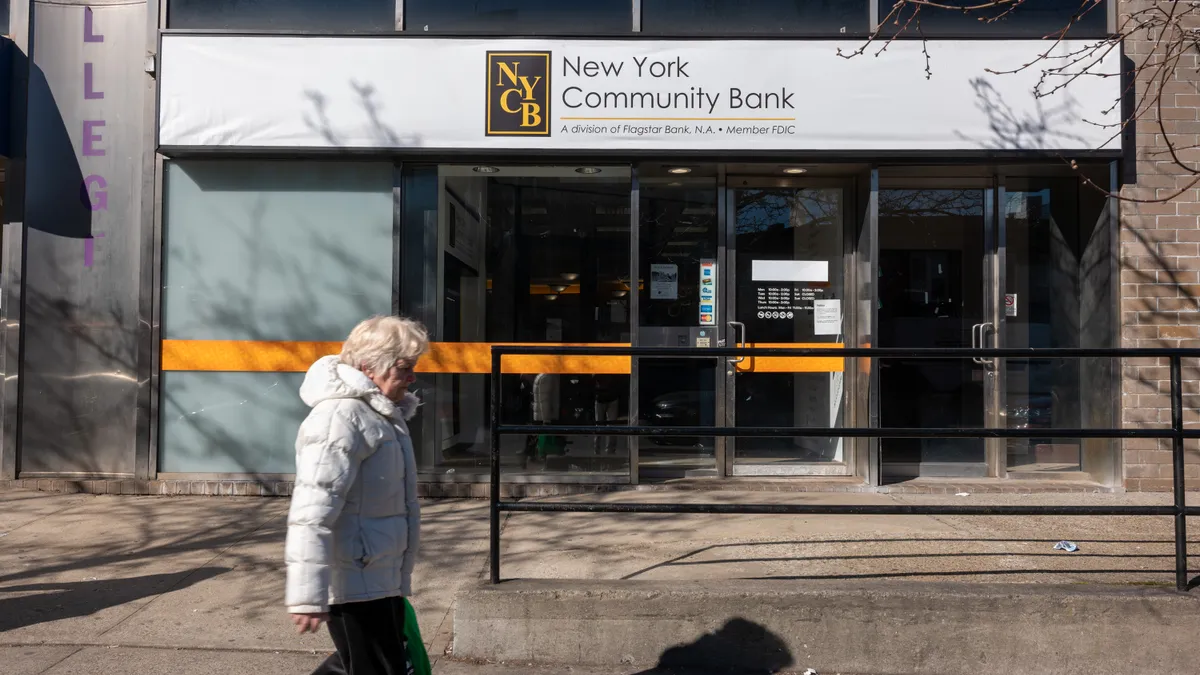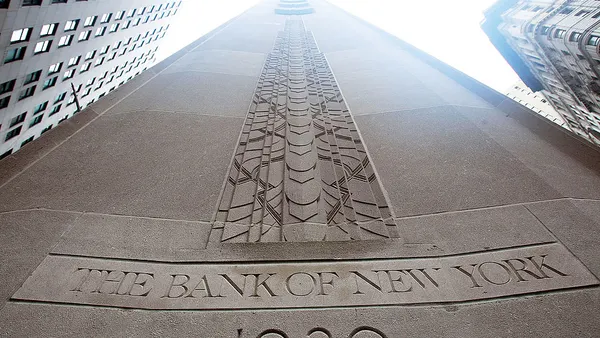Dive Brief:
- New York Community Bank’s new CEO and CFO laid out a strategy Wednesday to diversify the struggling bank and return it to profitability, as the lender reported first-quarter results.
- The bank posted a $335 million loss for the first quarter, compared to net income of $2 billion one year prior, according to earnings materials released Wednesday.
- But NYCB CEO Joseph Otting said the lender has “identified an opportunity” to sell $5 billion in assets in an effort to boost liquidity levels.
Dive Insight:
NYCB executives are “right at the doorstep of deciding whether we’re going to move forward with that transaction,” Otting said, adding they will “be working on that over the next 24, 48 hours.”
Otting declined to comment further on the details of that potential sale.
Otting and CFO Craig Gifford are working to better understand the business before making a determination on which assets are strategic and which aren’t, the CEO said, adding he anticipates having more to share when NYCB reports second-quarter results.
NYCB set aside $315 million for loan losses in the first quarter. The lender expects to put $750 million to $800 million toward loan-loss provisions for the full year, according to an earnings presentation.
Executives see 2024 as a transition year, targeting “peer level” profitability by the fourth quarter of 2026, according to the release. By that point, Hicksville, New York-based NYCB aims to achieve a return on average earnings assets of 1%, and a common equity tier 1 capital target in the range of 11% to 12%.
As for medium-term transformation plans, executives said they aim to diversify the bank’s loan portfolio so there’s less concentration and geographic risk, and boost core deposits to improve the bank’s funding profile.
NYCB’s share price jumped 33% in early trading Wednesday as news spread of the earnings and strategy. The bank’s stock plummeted more than 45% on Jan. 31, the last day NYCBannounced quarterly earnings. The losses continued as the bank announced a $2.4 billion goodwill impairment charge, changed CEOs twice and revamped its board.
The last raft of changes came as NYCB in March received a $1.05 billion capital infusion from ex-Treasury Secretary Steven Mnuchin’s Liberty Strategic Capital and other investors.
The March lifeline was “appropriate” in size, Otting said Wednesday when an analyst asked executives if the amount was more or less than needed.
“When we went through the due diligence process, initially, we had a smaller number, and it was concluded it needed to be north of $1 billion,” Otting said.
NYCB’s exposure to commercial real estate has been seen largely as the driving force behind the bank’s losses.
There wasn’t “much visibility to the developing situation in the office market, and to a small degree, in the multifamily market, and the impact that that would have on provisioning,” Gifford said Wednesday of the situation executives inherited. He added that management and staff have done a good job of catching up, but there’s work to do on the bank’s internal infrastructure.
Gifford was among several executives NYCB hired since the March infusion. Otting said NYCB’s executives have backgrounds that will be “instrumental in our efforts to improve the earnings profile of the bank.”
Still “it’s going to be a lot of hard work,” including putting an appropriate risk structure in place, Otting said during Wednesday’s call.
The bank was “not ready to be regulated by the OCC, and so we have a lot of catching up to do to get our standards up,” he said.
Otting ran the Office of the Comptroller of the Currency from 2017 to 2020.
As of the end of the first quarter, NYCB had $112.9 billion of assets, $83.3 billion of loans. The bank also had $74.9 billion in deposits — less than the $77.2 billion mentioned during an investor update earlier in March, Bloomberg reported.
Otting also addressed the lender’s loss of teams of private and commercial bankers, to the likes of New Jersey-based Peapack-Gladstone and Long Island-based Dime Community Bank. The bank has lost roughly 200 people in that group, Otting said, adding that “it has been a tough integration of them into our bank. Some of it has been our fault.”
But in addition, some of the bank’s legacy clients of Signature Bank “did not meet our [Bank Secrecy Act] standards, and those clients are no longer with Flagstar,” Otting said.
Just under $200 million in deposits have left the lender, with a current balance of about $6 billion, and Otting attributed the deposit retention to the fact that whole teams haven’t left, and the remaining members have reached out to their contacts and retained them.
It’s “basically gone down to a trickle of people leaving at this point,” Otting said.














